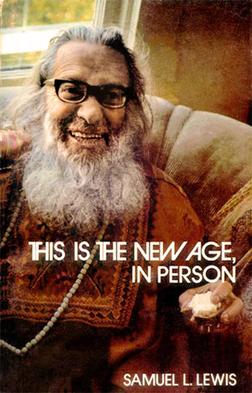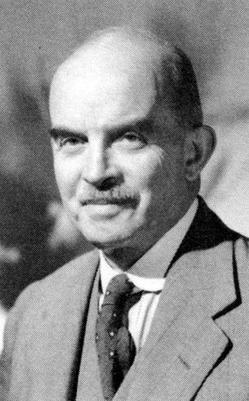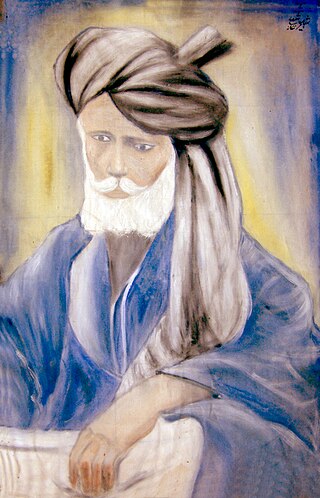
Meher Baba was an Indian spiritual master who said he was the Avatar, or God in human form, of the age. A major spiritual figure of the 20th century, he had a following of hundreds of thousands of people, mostly in India, but with a significant number in the United States, Europe, and Australia.

Sufism, also known as Tasawwuf, is a mystic body of religious practice found within Islam which is characterized by a focus on Islamic purification, spirituality, ritualism, asceticism, and esotericism. It has been variously defined as "Islamic mysticism", "the mystical expression of Islamic faith", "the inward dimension of Islam", "the phenomenon of mysticism within Islam", the "main manifestation and the most important and central crystallization" of mystical practice in Islam, and "the interiorization and intensification of Islamic faith and practice".

A tariqa is a school or religious order of Sufism, or specifically a concept for the mystical teaching and spiritual practices of such an order with the aim of seeking haqiqa, which translates as "ultimate truth".

The Chishtī Order is a tariqa, an order or school within the mystic Sufi tradition of Sunni Islam. The Chishti Order is known for its emphasis on love, tolerance, and openness. It began with Abu Ishaq Shami in Chisht, circa 930 AD in a small town near Herat, a strategic city in then Eastern Persia, which later became independent and then part of Afghanistan.

Samuel L. Lewis also known as Murshid Samuel Lewis and Sufi Ahmed Murad Chisti was an American mystic and horticultural scientist who founded what became the Sufi Ruhaniat International, a branch of the Chishtia Sufi lineage. After a lifetime of spiritual study with teachers East and West, primarily Inayat Khan and Nyogen Senzaki, Lewis was recognized simultaneously as a Zen master and Sufi murshid by Eastern representatives of the two traditions. He also co-founded the Christian mystical order called the Holy Order of Mans. His early interest in international seed exchange and organic agriculture also established him as one of the pioneers of green spirituality. His most enduring legacy may be the creation of the Dances of Universal Peace, an early interspiritual practice that has spread around the world in the 50 years since his death.

Sayyid Abdullah Shah Qadri, known popularly as Baba Bulleh Shah and Bulleya, was a 17th and 18th-century Punjabi revolutionary philosopher, reformer and a Sufi poet, universally regarded as the "Father of Punjabi Enlightenment". He spoke against powerful religious, political and social institutions. He lived and was buried in Kasur.

The Qadiriyya are members of the Sunni Qadiri tariqa. The tariqa got its name from Abdul Qadir Gilani, who was a Hanbali scholar from Gilan, Iran. The order relies strongly upon adherence to the fundamentals of Sunni Islamic law.

Sufism is the mystical branch of Islam in which Muslims seek divine love and truth through direct personal experience of God. This mystic tradition within Islam developed in several stages of growth, emerging first in the form of early asceticism, based on the teachings of Hasan al-Basri, before entering the second stage of more classical mysticism of divine love, as promoted by al-Ghazali and Attar of Nishapur, and finally emerging in the institutionalized form of today's network of fraternal Sufi orders, based on Sufis such as Rumi and Yunus Emre. At its core, however, Sufism remains an individual mystic experience, and a Sufi can be characterized as one who seeks the annihilation of the ego in God.

God Speaks: The Theme of Creation and Its Purpose is the principal book by Meher Baba, and the most significant scripture used by his followers. It covers Meher Baba's view of the process of creation and its purpose and has been in print continuously since 1955.

Rābiʼa al-ʼAdawiyya al-Qaysiyya was an Arab Muslim saint, one of the earliest Sufi mystics and an influential religious figure. She is known in some parts of the world as Hazrat Rabia Basri, Rabia Al Basri or simply Rabia Basri. She is considered by many Muslims to be an example of piety and is a part of the complicated early history of Islam.

Hazrat Babajaan was a Pashtun Muslim saint considered by her followers to be a Sadguru or Qutub. Born in Balochistan, Afghanistan, she lived the final 25 years of her life in Pune, India. She was the original master of Meher Baba, an Indian spiritual master.
Daniel Ladinsky is an American poet and interpreter of mystical poetry, born and raised in St. Louis, Missouri. Over a twenty-year period, beginning in 1978, he spent extensive time in a spiritual community at Meherabad, in western India, where he worked in a rural clinic free to the poor, and lived with the intimate disciples and family of Meher Baba.

Friedrich von Frankenberg, born Friedrich Elliot von Frankenberg and also known as Frederick von Frankenberg and by his Sufi name Sheikh Momin, was one of the early founders of Sufism in Australia. Von Frankenberg studied under Inayat Khan, who first brought this mystical order of Islam to the West, before going on to found the first Sufi society in Australia.
The Sufi Ruhaniat International (SRI) is a stream of Universal Sufism and draws inspiration from traditions of Sufism within and beyond historic Islam. SRI is an initiatic order within the lineage of Inayat Khan (Inayati-Chishtiyya). Sufi Ahmed Murad Chisti, a disciple of Inayat Khan, formally founded the order in 1970. There are centers throughout the United States, Belgium, Canada, the Netherlands and the United Kingdom.
Syed Abdullah shah, popularly known as Hazrat Hajji Bahadar Kohati, Sufi saint of Kohat, was born on July 31, 1581, AD, in Agra (India) during the reign of Mughal Emperor Shah Jahan.

Maula Shah (1836–1944) was a poet associated with Punjabi epic poems and folk tales. He later became a Muslim ascetic-Sufi and mystic poet. He wrote seven books of poetry. He was creator of great folk tales in Punjabi literature but his known books of poetry are Sassi Punnu, Bughamal Bishnoon, Mirza Sahibaan, Heer Ranjha, Zohra Mushtari and Chandar Badan.
Western Sufism, sometimes identified with Universal Sufism, Neo-Sufism, and Global Sufism, consists of a spectrum of Western European and North American manifestations and adaptations of Sufism, the mystical dimension of Islam.

Syed Nadir Ali Shah, popularly known as Murshid Nadir Ali Shah, was a Sufi saint of the Qalandariyya sufi order of Islam, a Muslim preacher, ascetic, mystic, philanthropist and humanitarian. Born in Gandaf in the north-west of the Indian subcontinent, he eventually settled in Sehwan Sharif, Sindh. He was a spiritual descendant of the well-regarded Sufi saint Lal Shahbaz Qalandar and the custodian of the revered Sufi Khanqah, Kafi Sakhi Sarwar located in Sehwan Sharif. Nadir Ali Shah's legacy primarily revolves around his distinction as one of the most remarkable figures among the saints of the Qalandariyya Sufi order. He is renowned for his pursuits in Islamic preaching, mysticism, and asceticism. Beyond his spiritual contributions, he is recognized for his substantial efforts in advancing human welfare and uplifting the underprivileged, in line with the teachings of the Qalandariyya Sufi order of Islam. Notably, he also served as the custodian of the shrine of the Sufi saint Abdullah Shah Ghazi in Karachi.

The Theme of Creation : An Exploration of Meher Baba's "God Speaks" is a 2005 American documentary film produced, written, edited and directed by Tim Thelen. The film is an analytical exploration of Meher Baba's "God Speaks", and William Donkin's "The Wayfarers", with interviews from religious scholars Carl W. Ernst, Rick Chapman, Allan Cohen, Kendra Crosen Burroughs, Robert Dreyfuss, Charmian Duce Knowles, Bhau Kalchuri, Pascal Kaplan, Phyllis Ott, Tom Riley, Don Stevens, and Adele Wolkin. Tim Thelen adapted, and co-wrote the film with God Speaks editor Don Stevens.














